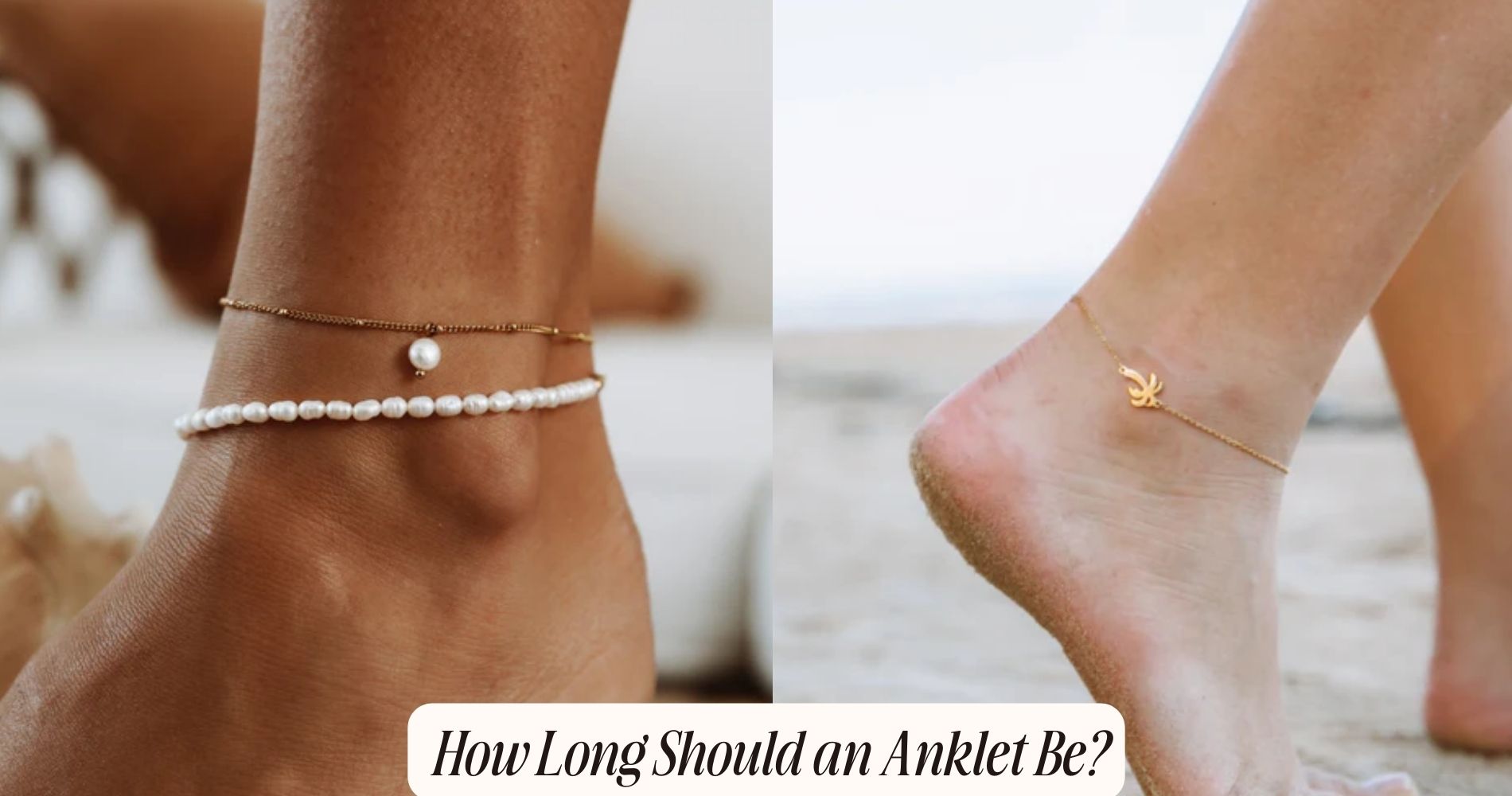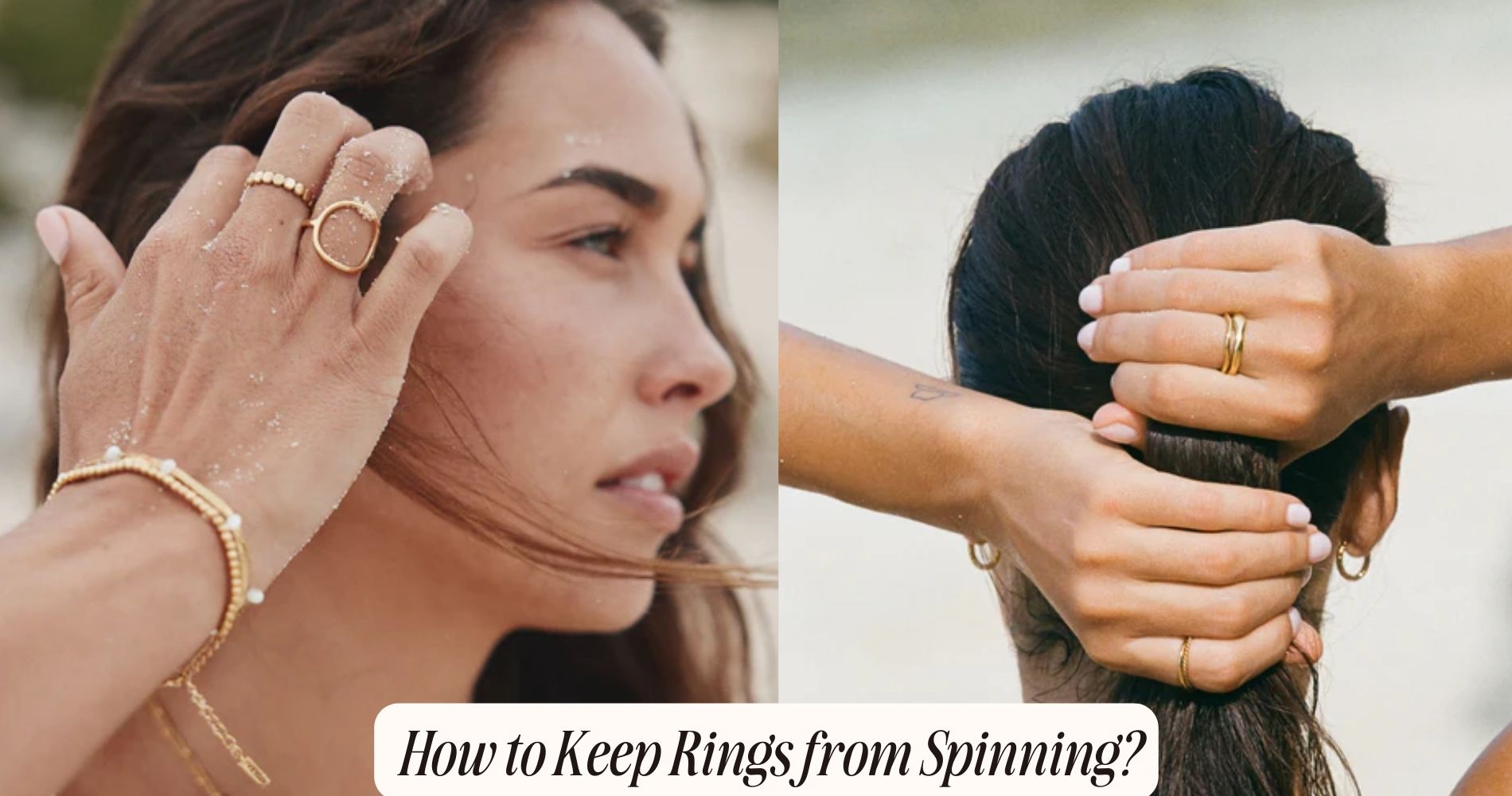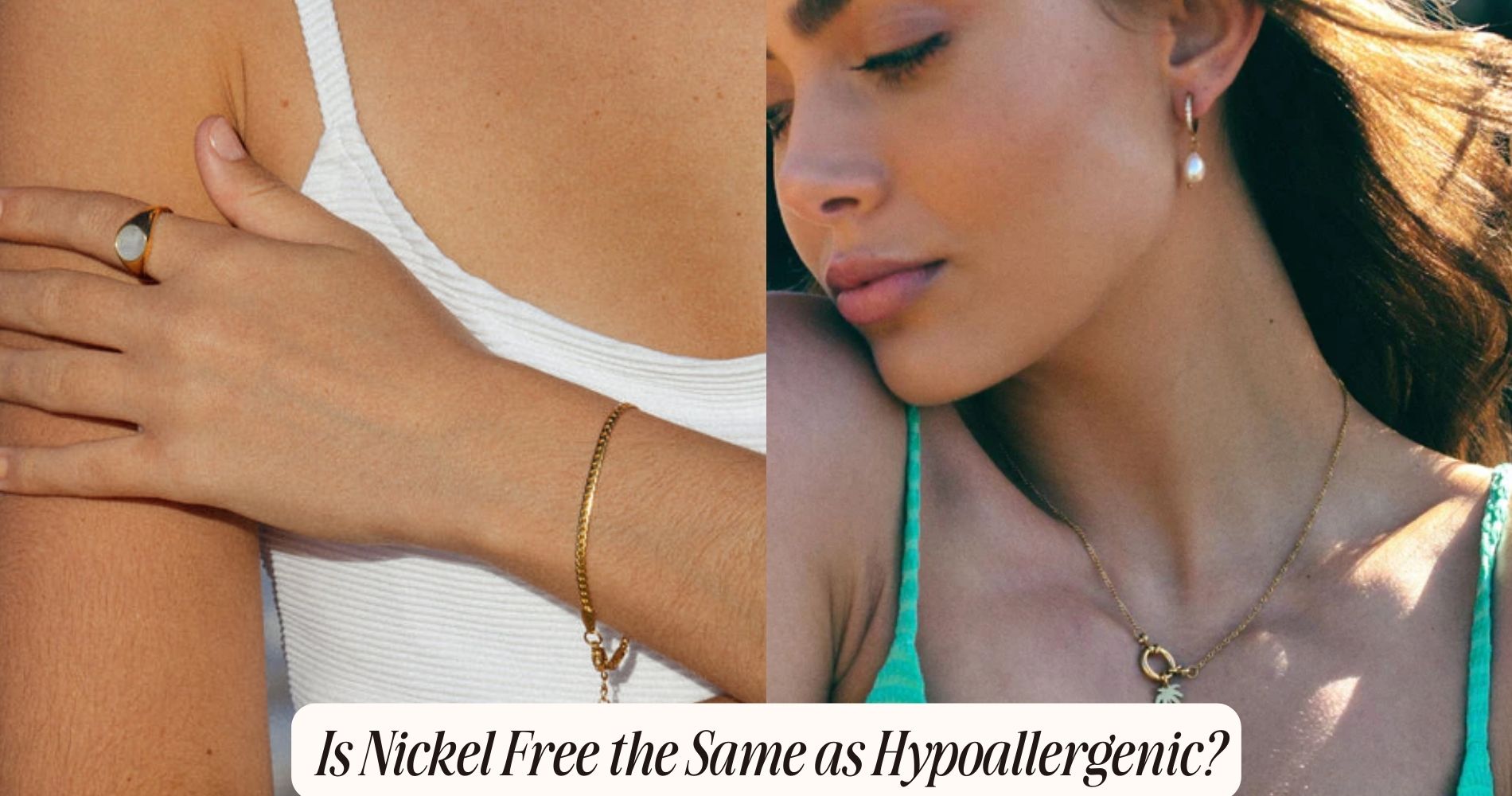
How Long Should an Anklet Be?
When determining how long an anklet should be, the typical length ranges from 9 to 10 inches for most adults. To find your ideal size, use a flexible measuring tape or a piece of string to measure your ankle, then add 0.5 to 1 inch to ensure a comfortable fit. Anklets come in various styles such as beaded, charm, and are made from materials including stainless steel, silver, and high-quality leather. For a custom fit, consider adjustable anklets equipped with sliding knots or elastic bands. Proper measurement is crucial to avoid sizing errors and ensure optimal comfort. Explore different designs, evaluate material durability, and check clasp security to enhance your style. Dive deeper into the blend of functionality and aesthetics in our Waterproof Anklets collection.
Standard Anklet Length
Typically, the standard anklet length ranges from 9 to 10 inches, ensuring a comfortable fit for most adults. This measurement has evolved through both practical and historical contexts.
Anklet history dates back to ancient civilizations such as Egypt and India, where ankle adornments held significant cultural value. In these societies, anklets weren't only decorative but also indicative of social status and marital status.
When considering the cultural significance of anklets, it's essential to understand that their length and design varied according to regional customs and individual preferences.
For instance, in some cultures, longer anklets were preferred as they allowed for more intricate designs and embellishments. Conversely, shorter anklets were favored in other regions for their simplicity and ease of movement.
Measuring Your Ankle
To measure your ankle accurately, wrap a flexible measuring tape around the narrowest part of your ankle bone. Make sure the tape is snug but not tight, maintaining a comfortable fit. This positioning is essential for measurement accuracy. Align the zero mark of the ankle tape with the end, forming a complete circle around your ankle.
While holding the tape in place, read the measurement where the zero mark meets the tape. This value represents the circumference of your ankle. For best results, repeat the measurement two or three times, ensuring consistency. If discrepancies arise, recheck the tape placement and tension to maintain uniformity.
When selecting an anklet, consider adding 0.5 to 1 inch to your recorded measurement. This additional length accounts for movement and comfort, preventing the anklet from being too tight. Precision at this stage ensures the final product fits well and feels comfortable.
For those without a flexible measuring tape, use a string or ribbon. Wrap it around your ankle as described, then measure the length of the string with a standard ruler. This step maintains the same measurement accuracy as using an ankle tape.
Types of Anklets
Anklets come in various types, each designed with specific materials, styles, and functionalities to suit different preferences and occasions.
Beaded anklets, for instance, are composed of small beads strung together on a durable thread or wire. These beads can be made of glass, wood, metal, or gemstones, and are often chosen for their aesthetic appeal and tactile sensation. Beaded anklets are versatile and can be worn casually or paired with more formal attire.
Charm anklets are another popular type, distinguished by small decorative pendants or trinkets attached to a chain or band. These charms can represent personal interests, symbols, or even memories, making the anklet uniquely meaningful to the wearer. Charm anklets often feature a series of charms spaced evenly along the chain, providing both visual interest and emotional significance.
Both types of anklets serve distinct purposes and can be chosen based on the desired look and personal significance. The length and fit of an anklet are essential for comfort and style, so selecting the right type is necessary. When deciding between beaded anklets and charm anklets, consider the occasion and the statement you want to make.
Material Considerations
When selecting anklets, consider the material's durability, comfort, and aesthetic appeal.
Material durability is vital; anklets undergo constant movement and friction, especially if worn regularly. Materials like stainless steel, titanium, and high-quality leather offer superior longevity. Stainless steel and titanium resist tarnishing and corrosion, ensuring the anklet maintains its appearance over time. Leather, when treated correctly, provides a comfortable, flexible option with extended wear life.
Comfort is another significant factor. Hypoallergenic properties are essential for individuals with sensitive skin. Metals such as surgical-grade stainless steel, titanium, and platinum are less likely to cause skin reactions. Additionally, natural materials like cotton or silk threads can offer a soft, irritation-free experience.
Aesthetic appeal varies greatly depending on personal preferences. Metals like gold and silver provide a classic, elegant look, while beads and woven designs can add a bohemian or casual flair. Each material offers distinct visual characteristics, influencing the anklet's overall appearance.
Adjustable Anklets
Adjustable anklets offer significant advantages, including custom fit benefits and versatile sizing options.
You can easily modify the length to suit different ankle sizes, ensuring comfort and proper fit.
This adaptability makes adjustable anklets a practical choice for varied use cases.
Custom Fit Benefits
A custom-fit anklet guarantees maximum comfort and ideal wearability by enabling precise adjustments to the wearer's exact ankle size. This precise fit ensures that the anklet sits snugly without causing discomfort or irritation. When you achieve the ideal comfort level, you can wear the anklet for extended periods without experiencing any negative effects.
An adjustable anklet specifically crafted to match your ankle circumference eliminates the common issues associated with generic sizing, such as slippage or constriction. Custom-fit anklets provide more than just improved comfort. They offer enhanced durability and longevity. By fitting correctly, the anklet experiences less strain and wear, preventing premature breakage or deformation. You also reduce the risk of skin abrasions and pressure marks, which can result from ill-fitting accessories. This technical precision in sizing translates to a superior overall experience.
Moreover, the ease of adjusting an anklet to your exact needs adds a layer of convenience. You don't need to worry about measuring inaccuracies or the hassle of returning ill-fitting items. Instead, you can focus on enjoying your accessory, confident that it complements your ankle perfectly.
Versatile Sizing Options
How do adjustable anklets offer versatile sizing options to provide a perfect fit for every individual?
Adjustable anklets incorporate mechanisms like sliding knots, links, or elastic materials, allowing you to customize the fit easily. This feature guarantees size inclusivity, accommodating a wide range of ankle circumferences. You won't need to worry about finding the exact measurements, as the adjustable nature allows for flexibility.
Furthermore, adjustable anklets align with seasonal trends by enabling you to adapt their fit based on the type of footwear you choose.
For instance, in summer, you might wear sandals, requiring a looser fit to account for potential swelling from heat. Conversely, in cooler months, you might prefer a snugger fit to wear with boots or thicker socks. This adaptability ensures the anklet complements your style year-round.
The precision in adjustable design means you can achieve both comfort and aesthetic appeal without compromising one for the other.
Personal Style Preferences
Consider your outfit choices when determining anklet length, as a shorter anklet may complement casual wear, while a longer one may suit formal attire.
You should also think about accessory layering; make sure the anklet's length doesn't clash with other jewelry. Balancing these elements will help you achieve a cohesive and stylish look.
Matching Outfit Choices
When selecting an anklet to match your outfit, consider the overall aesthetic and make sure the design complements your personal style preferences. Evaluate the current seasonal trends and how they align with your wardrobe. For instance, lightweight, pastel-colored anklets may be suitable for summer outfits, while heavier, darker anklets could be more appropriate for fall or winter attire.
Additionally, take into account the cultural significance of specific anklet designs. Certain patterns and materials may hold particular meanings in different cultures, and it's crucial to respect these traditions when integrating them into your style. For example, in some cultures, anklets with bells or specific charms are considered auspicious and can symbolize various aspects of life.
To maintain cohesion, match the anklet's material and color to the primary elements of your ensemble. If your outfit features metallic accents, opt for an anklet in a complementary metal. Similarly, if your clothing boasts vibrant patterns, a simpler anklet design may prevent visual overload. Accurate matching of your anklet with your outfit ensures a harmonious and polished appearance, adhering to both aesthetic and cultural considerations.
Accessory Layering Tips
To elevate your personal style, integrate accessory layering techniques that enhance the visual complexity and depth of your ensemble. Begin by selecting anklets of varying lengths, textures, and materials. This approach creates a stratified look, adding dimension to your ankle.
When layering beach anklets, consider incorporating natural elements such as shells, beads, and braided cords. These materials align with current anklet trends, making your look both contemporary and thematic. Make sure each anklet is visible and distinct; avoid overlapping too closely to prevent visual clutter.
For a more sophisticated appearance, mix metallic anklets with different finishes, such as gold, silver, or rose gold. This method aligns with modern anklet trends, offering a polished yet layered look. Match your anklets with other jewelry pieces, such as rings or bracelets, to create a cohesive aesthetic.
Pay attention to the overall balance of your accessories. If you're wearing multiple anklets, minimize other jewelry to avoid an over-accessorized appearance. Conversely, if your outfit is minimalist, more layered anklets can provide a focal point.
Anklets for Different Occasions
Anklets can be customized to suit various occasions by selecting appropriate materials, designs, and lengths. For occasion specific events, you should choose anklets that match the importance and style of the event.
For instance, elegant anklets made of precious metals like gold or silver are suitable for formal gatherings, while casual events can accommodate more relaxed designs made from leather or fabric.
Holiday anklets are another category to take into account. During festive seasons, anklets adorned with thematic charms such as stars, bells, or snowflakes can enhance your holiday attire. These anklets often incorporate vibrant colors and playful designs, making them perfect for holiday parties or family gatherings.
When determining the length of an anklet for any specific event, it's important to make sure it fits comfortably around your ankle without being too tight or too loose. A standard length for most adult anklets ranges from 9 to 10 inches, but adjustments can be made based on personal preference and the specific style of the anklet.
Common Sizing Mistakes
Many people make the common mistake of not measuring their ankle accurately before purchasing an anklet. This oversight can lead to several issues, including over tightening risks and discomfort. When an anklet is too tight, it can restrict circulation, causing swelling and irritation. Additionally, an overly tight anklet may break more easily under strain, reducing its lifespan.
Another frequent error is selecting an anklet with an improper clasp. An ill-fitting clasp can fail to secure the anklet properly, resulting in potential loss or damage. Selecting a clasp that matches the anklet's weight and design is crucial to ensure both security and ease of use.
Ignoring the interplay between anklet length and clasp type can also lead to problems. For instance, a lobster clasp may be suitable for shorter anklets but less effective for longer ones, where a toggle clasp might provide better stability. Therefore, precise measurement and appropriate clasp selection are critical to avoid these common sizing mistakes.
Always measure your ankle at its widest point and make sure the clasp is robust and compatible with the anklet design to mitigate over tightening risks and ensure a proper fit.
Buying Guide Tips
When purchasing an anklet, make sure you measure your ankle at its widest point for an accurate fit. Use a measuring tape and add an extra half-inch to one inch to guarantee comfort and movement. This ensures that the anklet is neither too tight nor too loose.
Consider current anklet trends when selecting your piece. Popular styles include layered anklets, charm anklets, and minimalist designs. For beach wear, opt for materials that resist corrosion, such as stainless steel, titanium, or high-quality plastics. These materials withstand exposure to saltwater and sand, maintaining their integrity and appearance.
Select an adjustable anklet if you want versatility. Many modern designs incorporate adjustable chains or elastic materials, allowing you to modify the fit as needed. This feature is particularly useful if you plan to wear the anklet over different types of footwear or in varying environments.
Lastly, inspect the clasp mechanism. A secure, easy-to-use clasp is essential to prevent loss. Lobster clasps and magnetic clasps are commonly recommended for their reliability and ease of use. By adhering to these guidelines, you can choose an anklet that complements both your style and practical needs.
Frequently Asked Questions
Can Anklets Be Worn on Both Ankles Simultaneously?
You can wear anklets on both ankles simultaneously. Fashion trends support this, enhancing your personal style. Guarantee symmetry and comfort. Check for matching designs or complementary styles to maintain a cohesive and polished look.
Are There Cultural Significances to Anklet Lengths?
You're exploring if anklet lengths hold cultural significances. Historically, anklets have symbolic meanings in various cultures, often indicating social status, marital status, or spiritual beliefs. These meanings can vary greatly across different societies and traditions.
How Do I Maintain the Longevity of My Anklet?
To maintain your anklet's longevity, guarantee proper storage in a dry, cool place and avoid exposure to harsh chemicals. Regular cleaning with a soft cloth and gentle solution will prevent tarnish and preserve its appearance.
Are There Health Concerns Related to Wearing Anklets?
Make sure your anklet isn't too tight to avoid skin irritation. Consistent tightness can restrict circulation and cause discomfort. If you notice redness or swelling, adjust the fit immediately to prevent further health issues.
Can Anklets Be Worn Over Socks or Stockings?
You can wear anklets over socks or stockings, aligning with current fashion trends. Opt for flexible material choices like adjustable chains or elastic bands to guarantee comfort and proper fit, maintaining a stylish yet precise appearance.
Conclusion
To choose the perfect anklet, measure your ankle accurately and consider standard lengths.
Select a material that suits your skin and lifestyle.
Explore adjustable options for versatility.
Factor in personal style and the occasion.
Be mindful of common sizing mistakes to guarantee comfort and fit.
By following these guidelines, you'll find an anklet that complements your look and fits perfectly.
Make informed decisions for a stylish and comfortable accessory.
























Leave a comment
This site is protected by hCaptcha and the hCaptcha Privacy Policy and Terms of Service apply.